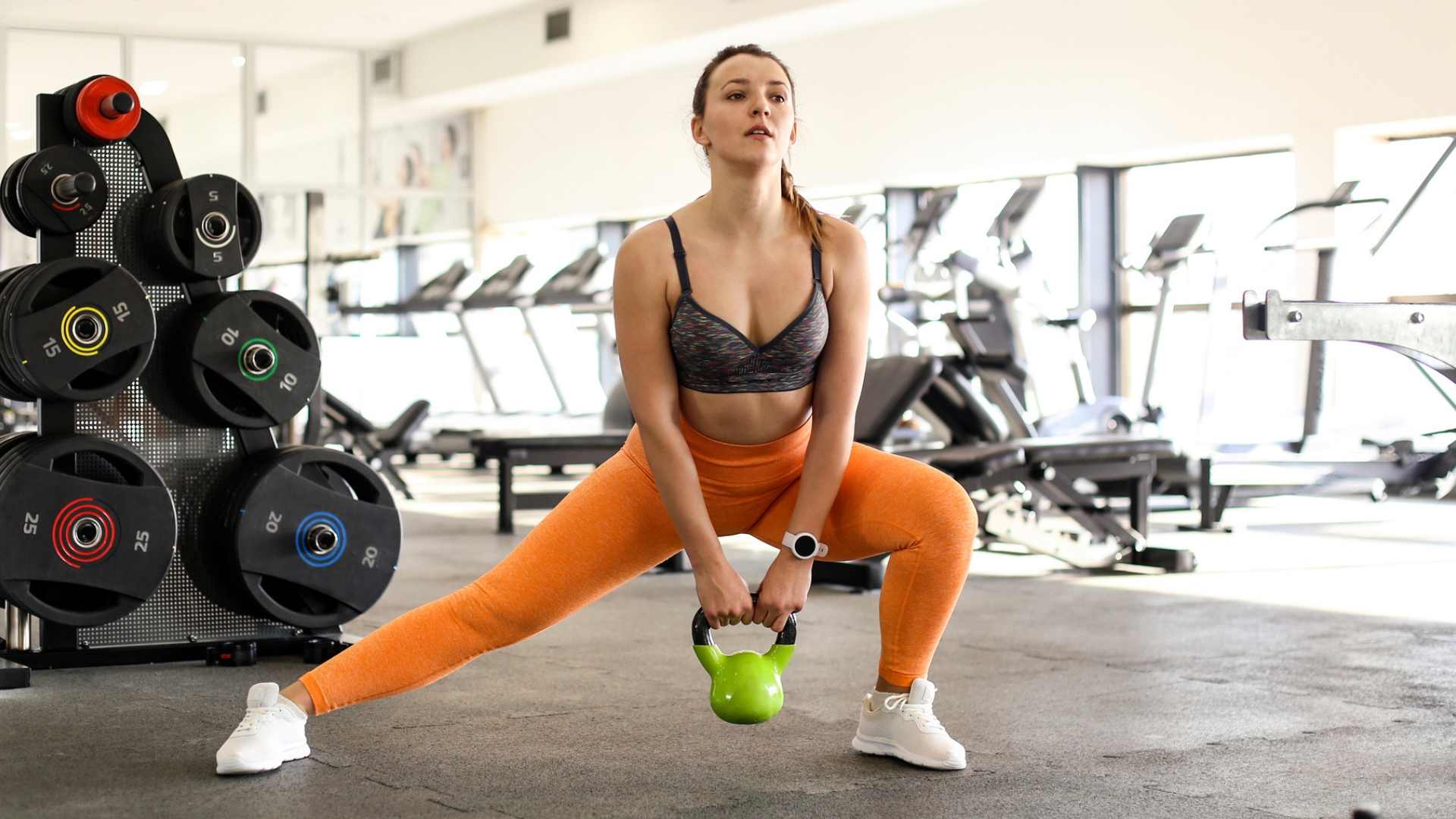Once you cross the age of 40, preserving muscle strength becomes essential—not optional. Age-related muscle loss, also known as sarcopenia, accelerates after this milestone, affecting balance, mobility, and daily function. But the right strength-training plan can slow this process down—and even reverse it.
Free weights offer one of the most effective and joint-friendly ways to build strength, especially in the lower body. Unlike machines, free weights improve balance, coordination, and core activation while working multiple muscle groups at once. Here are five targeted free-weight exercises that will strengthen your legs, improve joint stability, and help you stay active well into your 50s, 60s, and beyond.
Why Form, Warm-Ups, and Recovery Matter More After 40
Before diving into the workout itself, a quick but important reminder: proper form is non-negotiable, especially as your body becomes more injury-prone with age. Always start each session with a dynamic warm-up that includes exercises like leg swings, hip openers, and light cardio to get your joints moving and your blood flowing.
After training, prioritize recovery with stretching, foam rolling, and adequate rest. Equally important is nutrition—make sure you’re consuming enough protein to support muscle repair and growth. Building strength after 40 is entirely possible—but only with consistent, safe, and smart practices.
1. Goblet Squat
Muscles Targeted: Quads, glutes, hamstrings, core
Equipment: Dumbbell or kettlebell
Goblet squats are one of the best beginner-friendly strength exercises for building lower-body strength while encouraging good squat form and core stability. Holding the weight in front of your chest also counterbalances your torso, allowing for deeper squats without losing posture.
How to Perform:
- Stand with your feet slightly wider than shoulder-width apart, toes turned out slightly.
- Hold a dumbbell or kettlebell vertically at chest level, elbows tucked.
- Push your hips back and bend your knees to squat down while keeping your torso upright.
- Go as low as your mobility allows without rounding your back.
- Press through your heels to return to standing.
Start with 3 sets of 10–12 reps. Focus on control, not speed. This move builds foundational strength that benefits every other lower-body lift.
2. Dumbbell Deadlift
Muscles Targeted: Hamstrings, glutes, lower back
Equipment: Pair of dumbbells
The dumbbell deadlift is excellent for developing the posterior chain and reinforcing proper lifting mechanics. It strengthens the muscles responsible for bending, lifting, and standing—key movements for maintaining independence as you age.
How to Perform:
- Stand with your feet hip-width apart, holding dumbbells in front of your thighs.
- Keep your back straight and hinge at the hips, lowering the weights along your legs.
- Stop when you feel a deep stretch in your hamstrings.
- Drive through your heels and squeeze your glutes to stand tall.
Perform 3–4 sets of 8–10 reps. Keep your spine neutral and avoid bending at the waist. This move helps prevent lower back injuries and promotes better posture.
3. Bulgarian Split Squat
Muscles Targeted: Quads, glutes, hamstrings, stabilizers
Equipment: Pair of dumbbells and a bench or box
This single-leg exercise is ideal for improving balance, fixing muscle imbalances, and building strong, functional legs. It’s challenging but extremely effective—especially for those wanting to strengthen each leg independently.
How to Perform:
- Stand two feet in front of a bench and rest the top of one foot on it.
- Hold dumbbells at your sides.
- Lower your back knee toward the ground while keeping your front knee over your ankle.
- Keep your chest tall and core tight throughout.
- Drive through your front heel to return to the starting position.
Do 3 sets of 8–10 reps per leg. Focus on smooth, controlled motion. You’ll build strength, stability, and mobility all in one move.
4. Single-Leg Dumbbell Deadlift
Muscles Targeted: Glutes, hamstrings, core, lower back
Equipment: Single dumbbell
The single-leg deadlift offers a unique challenge by combining strength, balance, and coordination. It improves unilateral leg strength while protecting against falls and injuries.
How to Perform:
- Stand on your left leg, holding a dumbbell in your right hand.
- Hinge at your hips, keeping your back flat as your right leg extends behind you.
- Lower the weight toward the ground, stopping at mid-shin or when balance wavers.
- Squeeze your left glute to return to standing.
Aim for 3 sets of 8 reps per leg. Start light and increase load as your balance improves. This move also builds core strength, which is crucial for overall stability after 40.
5. Dumbbell Step-Up
Muscles Targeted: Quads, glutes, hamstrings, calves
Equipment: Dumbbells and a sturdy step or box
Step-ups closely mimic everyday activities like climbing stairs or getting up from a chair. This makes them one of the most functional lower-body exercises you can perform.
How to Perform:
- Stand in front of a knee-height bench or step, dumbbells in hand.
- Step one foot up, pressing through your heel to lift your body.
- Pause at the top, then step down under control.
- Alternate legs or perform all reps on one side before switching.
Do 3 sets of 10 reps per leg. Keep your chest lifted and avoid using momentum. This exercise not only strengthens your legs but also improves coordination and cardiovascular endurance.
Build Strength and Stability for Life
Lower-body strength training after 40 isn’t about lifting the heaviest weight—it’s about building functional strength that supports real-life movement and long-term health. These five exercises offer a comprehensive, joint-friendly routine to help you maintain muscle, boost balance, and stay physically capable well into your later years.
By training smart, recovering well, and staying consistent, you’ll not only build stronger legs—you’ll create a stronger future.










